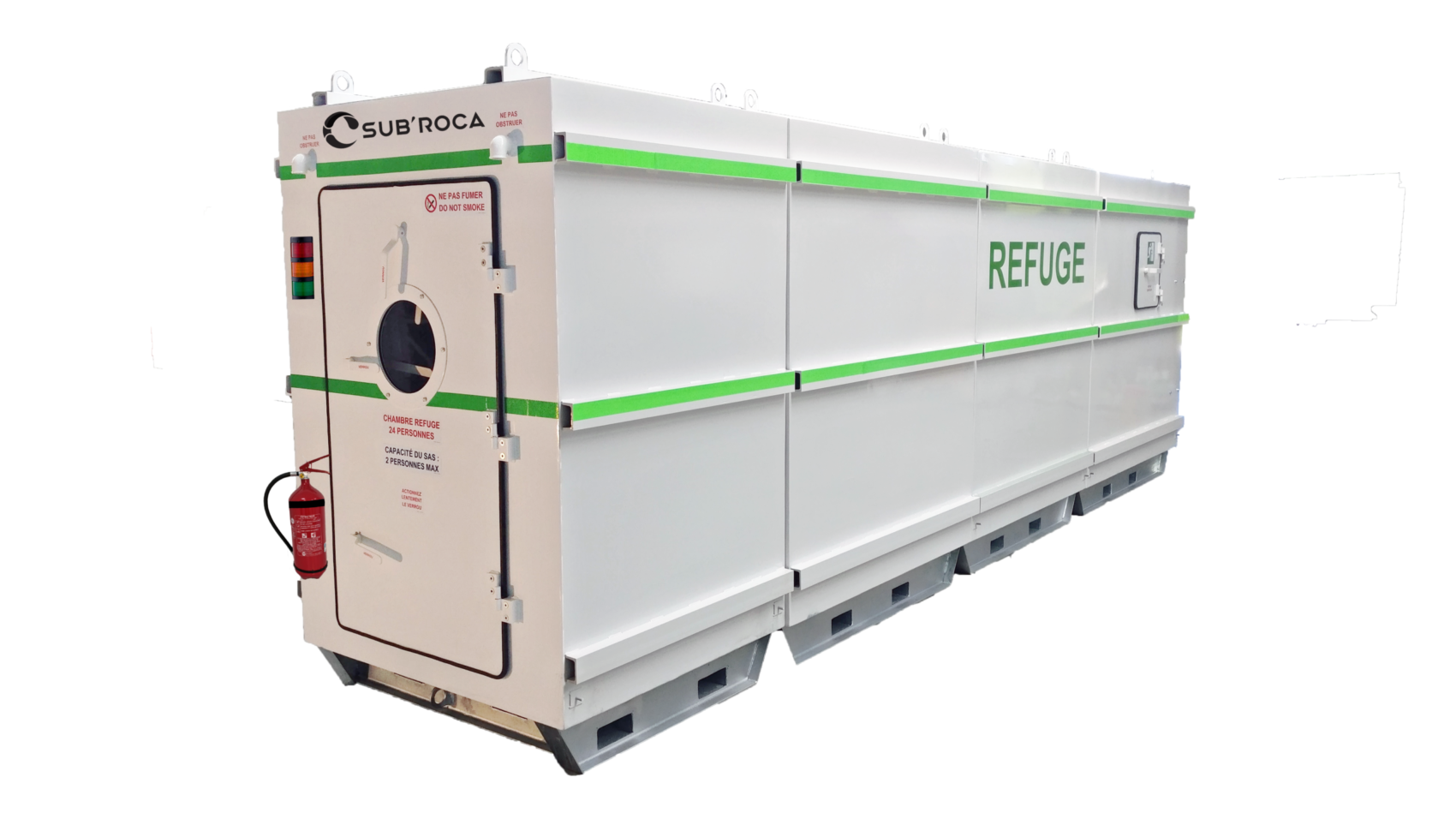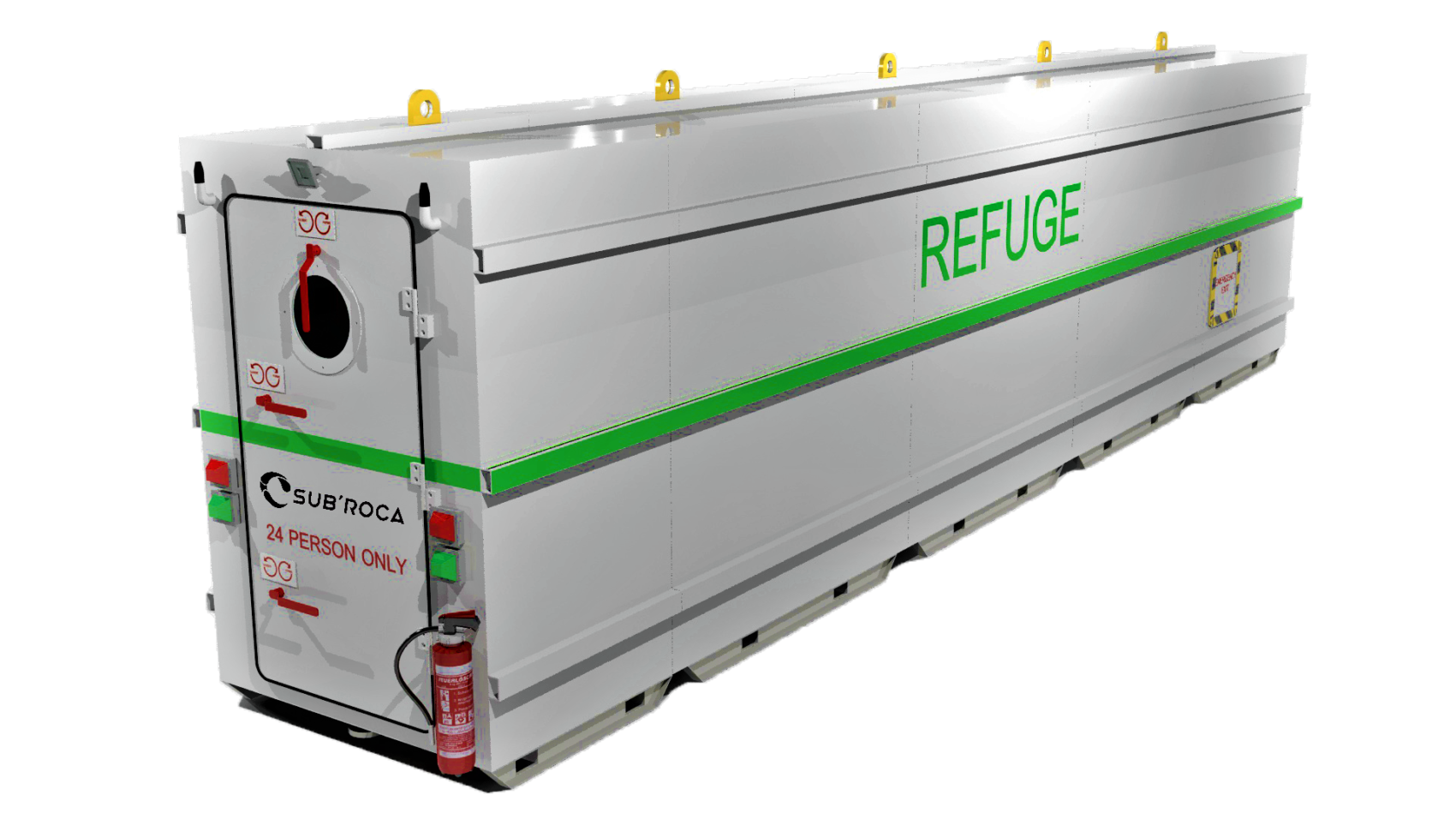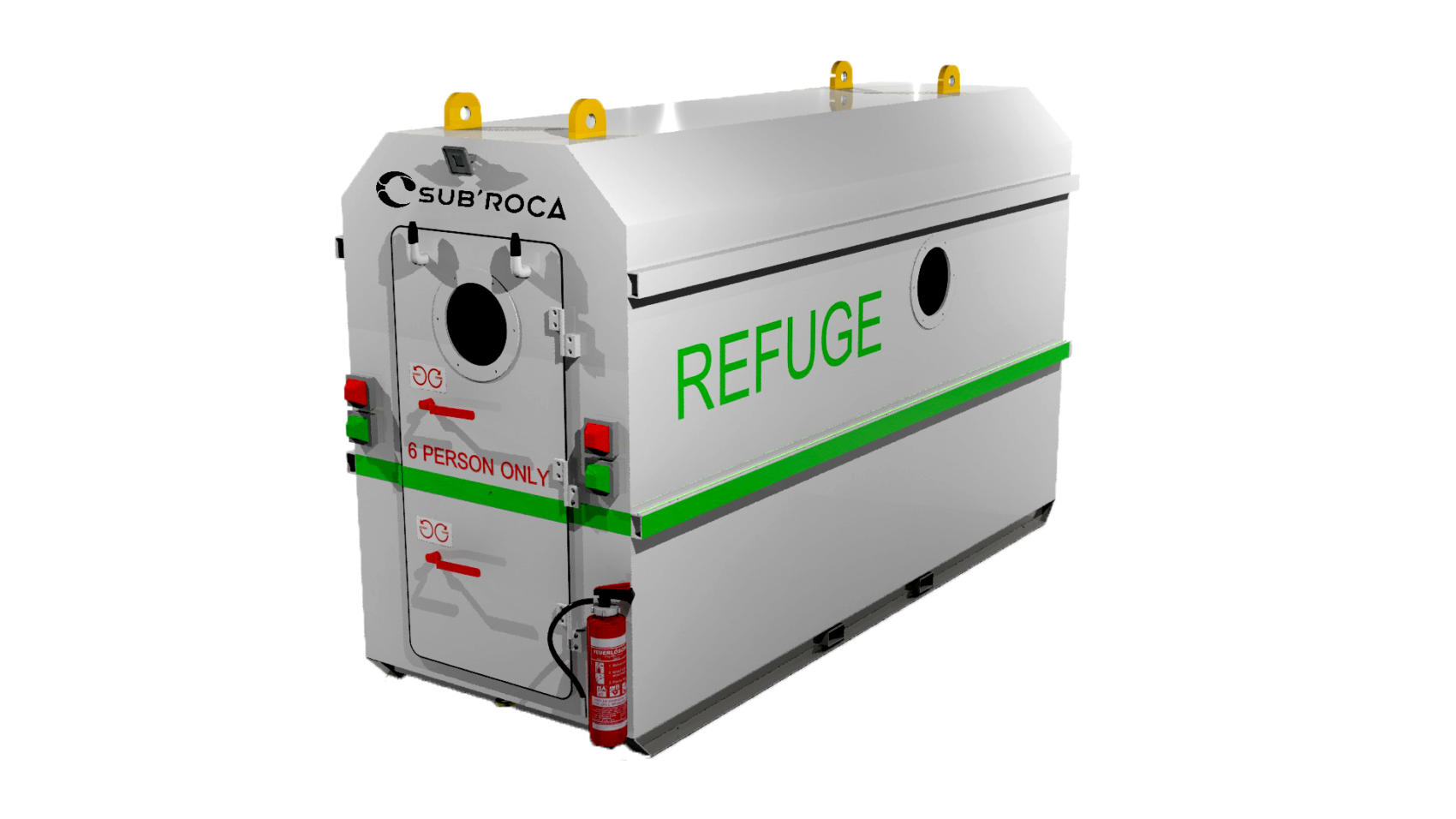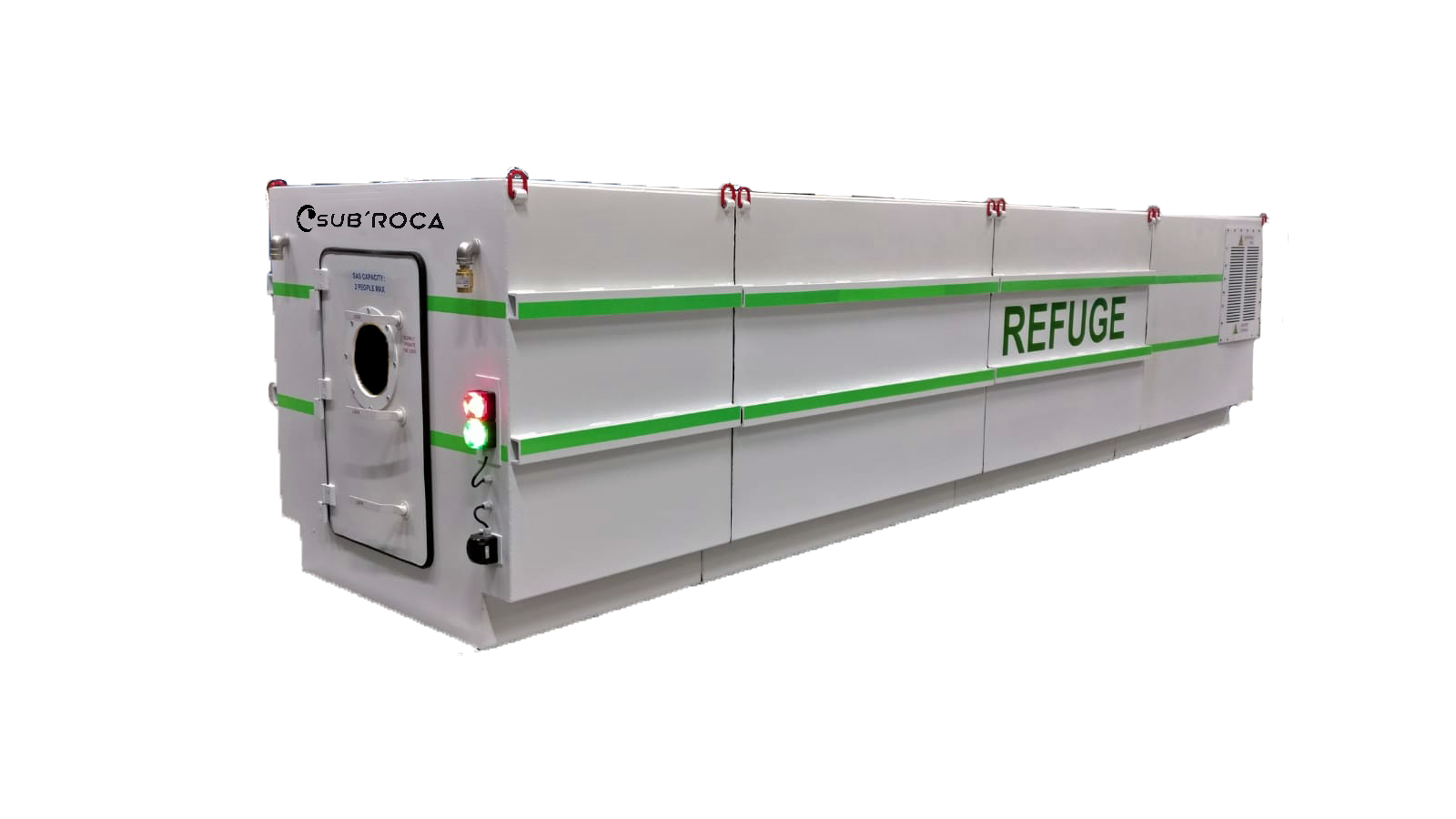What type of refuge chamber for explosive environments?
If the underground environment is a complex one, comprising a plurality of risks in a sometimes important coactivity, the major danger is that of fire. For example, it is reasonable to consider a fire in a digging machine (or mariner), in electrical equipment or in fuel storage facilities, which can be triggered by an electrical fault, overheating or an accident. The power and duration of the fire can vary according to the nature of the fuels, their quantity, or the presence or absence of oxidizer.
When analyzing fire risks, especially in underground work, the objective of the priorities established by prevention rules based on experience is to deal as quickly as possible with incipient fires by means of automatic extinguishing devices. These measures are in addition to the well-known evacuation measures in all public places. The particularity of underground works is that the underground space can hinder the free movement of people as well as the evacuation of smoke and heat. It will not always be possible to find an escape route, and in these situations, only the installation of pressurized shelters can increase the chances of survival.
In the last decades, unfortunate examples have proven that the consequences of a fire in an underground environment can be dramatic, which have led to awareness and have been the origin of regulations, or equipment intended to safeguard the lives of operators working underground.
If the underground works are very complex, the consideration of an atmosphere potentially charged with explosive gases or dusts is an additional constraint which intensifies the risks related to fires.
In coal mines, considered as « explosive », or other mines or galleries classified as such, the risk of causing an explosion is permanent or frequent. This is why, when an operator equips himself with materials, he must ensure that he is equipped with equipment certified by the manufacturer as non-explosive.
This is an intrinsically safe refuge chamber, i.e. a refuge chamber in which no spark or thermal effect, produced under the test conditions prescribed by the standard, is capable of causing the ignition of an explosive atmosphere.
Principle and operation of refuge chambers in explosive atmospheres
Underground explosive mines such as coal mines do not always have emergency exits or escape routes that are suitable for all reasonably foreseeable disaster scenarios and that allow workers to escape from the disaster or risk area. It is the responsibility of the operations manager to propose a place of safety for the personnel as close as possible to the work zones, such as the emergency and rescue shelters which will allow the personnel to take shelter in a secure space.
Faced with these constraints, SUB’ROCA designs its refuge chambers in a spirit of mobility and modularity so that they can be easily moved and create fallback areas as close as possible to the underground works. These shelters allow, thanks to their mobility and modularity, to make the evacuation plan evolve according to the progress of the digging.
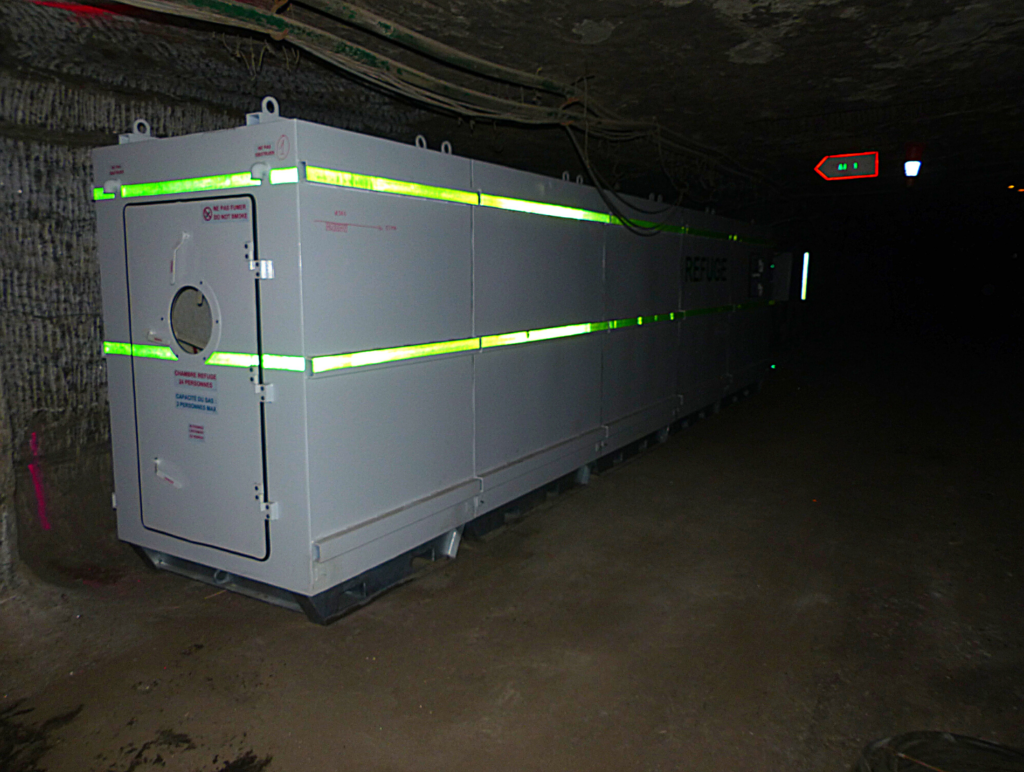
This solution ensures a fallback and thus frees up precious time for the organization and intervention of the emergency services.
The « explosive » quality of mines or underground workings is given to sites that show permanent or frequent accumulations of flammable gases and/or combustible dusts mixed with air and which, in the presence of an activation energy, would cause a sudden explosion. Although much progress has been made in the prevention of explosions and disasters in coal mines or underground workings in explosive atmospheres, explosions still occur, undoubtedly causing many deaths.
The dangers due to the presence of coals, flammable gases and dusts in the working atmosphere have led to the development of a special class of emergency shelters for use in coal mines.
SUB’ROCA offers a complete range of refuge chambers adapted to the specific constraints of mines with explosive atmospheres using compressed air to operate its equipment. These equipments are non-electrical, so there is no risk of producing a source of activation that could explode the atmosphere or ignite the dust in suspension.
These refuge chambers are called intrinsically safe refuge or rescue chambers.
Underground refuge chambers solutions
The standard range complies with ITA and EN standards, offering the necessary features for personnel safety.
The narrow range has a modular design to integrate the refuge chamber into small spaces such as narrow tunnels and veins.
The compact range is characterized by easily movable refuge chambers with a limited number of people.
The customizable range can be adapted to your specific needs, for example to be integrated on a specific equipment (tunnel boring machine or rescue vehicle).
Regulations and compliance of the equipment of intrinsically safe refuge chambers
The regulations in force in various parts of the world indicate that intrinsically refuge chambers must comply with the following points in particular:
- The chambers must maintain a breathable atmosphere inside the refuge chamber for a period of between 24 and 96 hours (depending on the country). In the event of a fire or if there is a risk of explosion, mine rescue teams may not be able to enter the mine and immediately rescue the miners in the refuge rooms.
- Refuge chambers shall be equipped with an oxygen supply and chemical scrubbers that absorb CO 2 and CO from the refuge air. An oxygen supply is provided to compensate for human respiration and leakage losses that occur.
- The access of the personnel in the refuge chamber is a critical moment which requires the restoration and the maintenance of the quality of the air. For this reason, the shelters are equipped with a SAS at the entrance that can be purged.
- The air quality inside the refuge chamber must be carefully monitored to keep oxygen, CO and CO 2 levels within acceptable limits according to the regulations of the country where the refuge will be installed.
- Since most gas sensors are limited in their ability to function properly at a relative humidity of less than 90%, it is necessary that the refuge chamber be equipped with a drying device to keep the relative humidity below 90%. Some studies have shown, in experiments, that the relative humidity inside the chamber would increase to 93%.
- Refuge chamber must be equipped with an artificial cooling system to maintain a temperature and humidity in accordance with the regulations in force in the country where the refuge chamber is installed.
- A human of average build, at rest, produces about 117 W of heat. In addition, the CO2 scrubbing process involves an exothermic chemical reaction that adds 40 to 50 W per person present to the heat generated inside the chamber. The ability of the chamber to dissipate this heat depends on the temperature of the air and rock inside the mine.
- Some mobile refuge chambers are equipped with an air conditioning cooling system that requires battery power. This system has the advantage of maintaining the atmosphere inside the chamber at a more comfortable temperature and humidity level. But other refuge chambers can be equipped with an intrinsically safe cooling system which is a circuit in which no spark or thermal effect, produced under the test conditions prescribed by the standard, is capable of causing the ignition of a given explosive atmosphere.
Conclusion
The emergency and refuge chambers intended to be installed in explosive atmospheres must have the « Intrinsic Safety » quality, i.e. they must be non-electrical, so as not to produce any activation energy that could cause the atmosphere to explode or ignite the dust in suspension.
This is why SUB’ROCA offers a complete range of refuge chambers adapted to the specific constraints of mines with explosive atmospheres.

